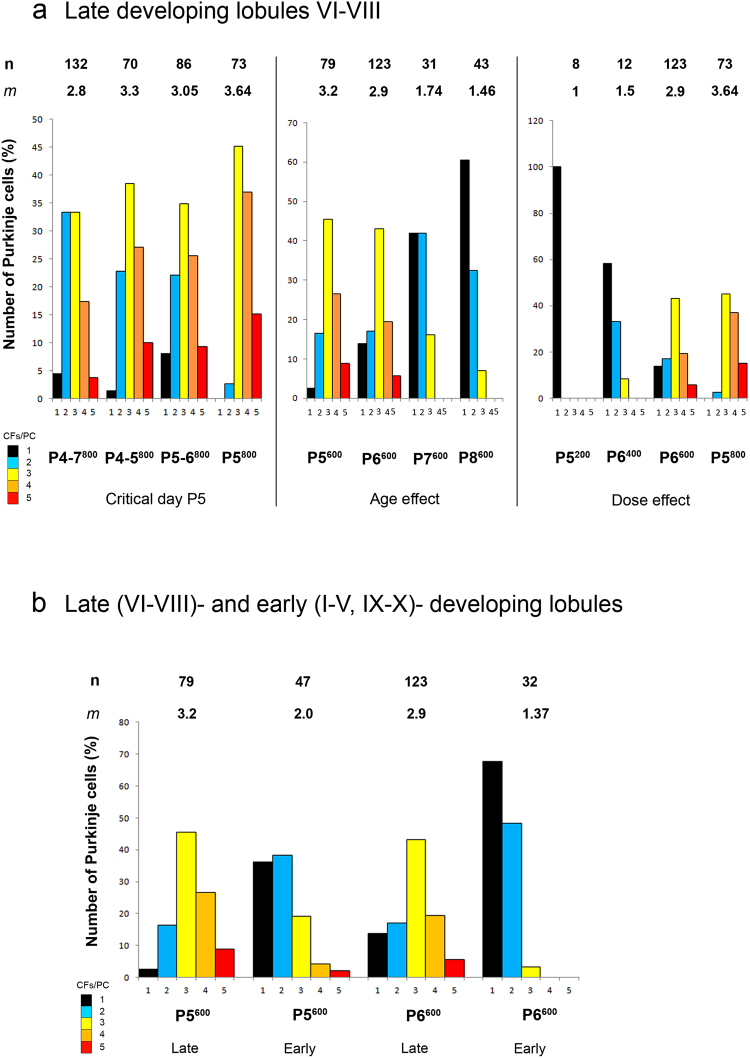Figure 6.
The number of cells studied (n) and the mean index (m) of multiple CF innervation in the corresponding groups are indicated in upper lines. The number of PCs mono-innervated and multi-innervated by 2 to 5 CFs is given in percent of the total number of recorded PCs and color-coded from black (1 CF/PC) to red (5 CFs/PC). (a) Distribution of CFs per PC in the late-developing cerebellar lobules VI, VII and VIII for different X-irradiated groups. Left. A single 800 r X-irradiation at the critical postnatal day 5 (P5800) maintains a greater index of multiple innervation than the same dose delivered over 2 days (2 × 400 r; P4-P5800 and P5-P6800) or 4 days (4 × 200 r; P4-P7800). Middle. The irradiation effect depends on development stage. Multiple innervation decreases when a single 600 r dose is given at progressively later days (Groups P5600, P6600, P7600 and P8600). Right. Decreasing the X-ray dose delivered over the P5-6 period decreases multiple innervation retained in the adult cerebellum. In Group P5200, the elimination process was completed normally; increasing doses increased retained CF multiple innervation. (b) Distribution of CFs per PC in the late- (VI-VIII) and early- (I-V, IX, X) developing cerebellar lobules of X-irradiated rats of Groups P5600 and P6600. A single 600 r X-irradiation at P5 (Group P5600) blocks CF synapse elimination more effectively than the same dose at P6 (Group P6600) in the late-developing and in the early-developing lobules. In both cases, this dose more efficiently blocks synapse elimination in the late-developing lobules than in the early-developing lobules.

